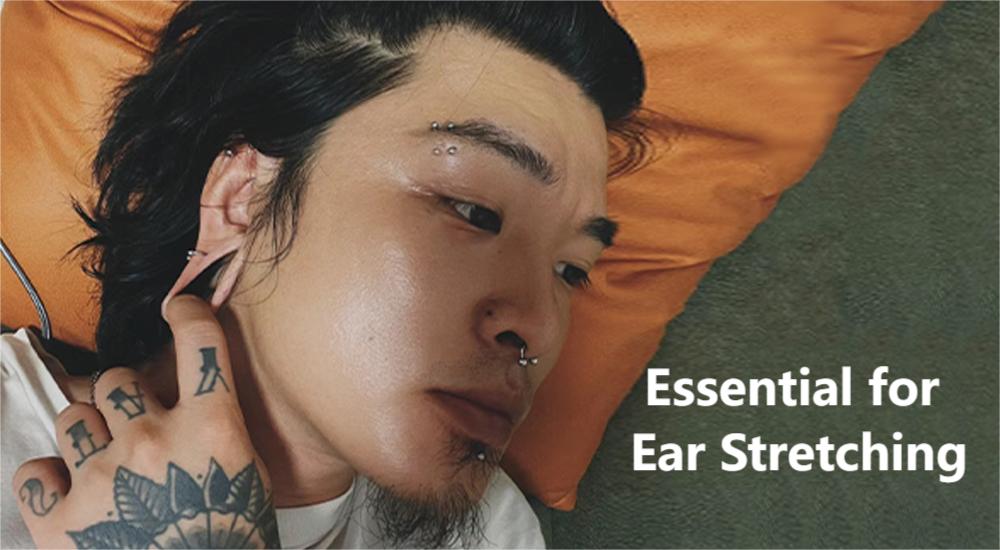Embarking on the journey of ear stretching is like stepping into a timeless tradition. While it's been practiced for centuries, if you're new to it, it's wise to approach it with care and knowledge. Proper stretching techniques are essential not only for achieving your desired gauge but also for preserving the health of your earlobes and minimizing the potential for complications.
Seeking Professional Guidance: The Role of Professional Piercers
Before diving in, consider seeking guidance from a professional piercer. They can not only initiate the process with a piercing but also provide valuable insights on how to stretch your ears safely and healthily. Their expertise can help you avoid common pitfalls and ensure that your stretching journey begins on the right foot.
Getting Started: Choosing the Right Gauge Size
Typically, the journey starts with a 14 gauge piercing size, followed by a gradual increase to a 12 gauge (2mm) taper. However, your starting point may vary depending on factors like your existing piercing size and your piercer's recommendations. Selecting the appropriate gauge size is crucial for initiating the stretching process effectively and minimizing discomfort or trauma to the earlobe.
The Key to Success: Patience in the Ear Stretching Process
One of the most critical aspects of ear stretching is patience. Rushing the process can lead to complications such as infections or scar tissue formation, which may impede further stretching. Remember to increase your gauge size slowly, allowing your ears enough time to heal between stretches. Patience is not only a virtue but also a necessity for achieving successful and healthy ear stretching results.
Healing and Recovery: Understanding the Healing Time
Speaking of healing, it's generally advisable to wait up to six months before attempting a new stretch. Adequate healing time is essential for allowing the earlobe to adjust to the new size and reducing the risk of complications. Understanding the healing process and being patient during this time is crucial for ensuring the long-term health and integrity of your stretched ears.
Closing Stretched Ears: Factors Affecting Closure and Reversibility
In conclusion, ear stretching is a journey that requires patience, caution, and proper care. By following safe practices and seeking professional guidance, you can achieve your desired gauge while minimizing risks and complications along the way.
Optimizing Healing Time: Guidelines for Waiting Between Stretches
To ensure the health of your earlobes and minimize the risk of complications, it's essential to wait an adequate amount of time between each stretch. Ideally, you should wait for 6-8 weeks before moving on to the next stretch, but at the very least, a month is advisable.
Sample Timeline: A Step-by-Step Guide to Stretching
The longer you wait between stretches, the better it is for your earlobes. This allows them to heal properly and reduces the likelihood of scar tissue formation. Here's a sample timeline to gauge how long you should wait between each stretch:
16g to 14g: 1-2 months
14g to 12g: 1-2 months
12g to 10g: 2-3 months
10g to 8g: 2-3 months
8g to 6g: 3-4 months
6g to 4g: 3-4 months
4g to 2g: 3-4 months
2g to 0g: 4-5 months
0g to 00g: 4-6 months
Remember, these are just guidelines, and it's crucial to listen to your body. If you experience difficulty fitting the taper through or feel resistance during stretching, it's a sign that you need to wait for further healing.
While it may seem tempting to rush through the process, taking it slow is ultimately better for your earlobes' health. Following this timeline, it would take approximately two years to reach 00 gauge. Remember, patience is key, and your earlobes will thank you for it in the long run.

